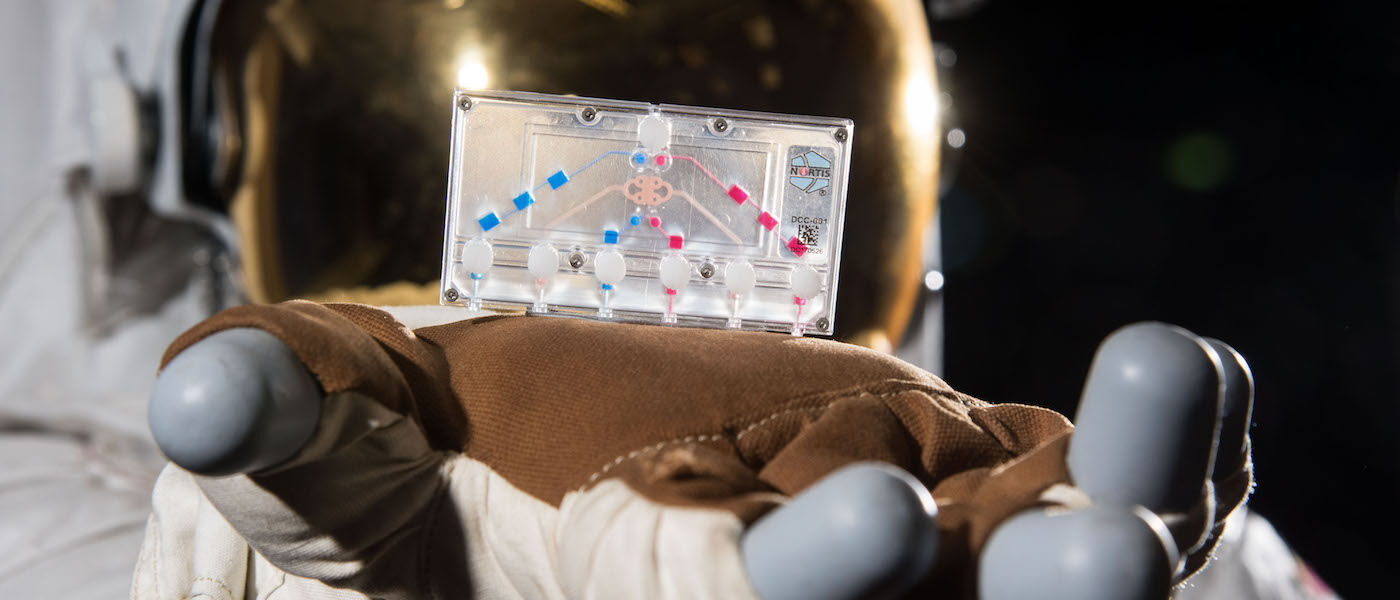These 3D space chips could help us change the aging process

These chips aren’t for snacking!
Tissue chips are small 3D devices about the size of a thumb drive with real human cells inside. Tissue Chips in Space is a program developed through a partnership between the National Center for Advancing Translational Sciences (NCATS) and the Center for Advancement of Science in Space (CASIS). The chips will be taken up to the International Space Station, where astronauts will use them for biomedical research.
Why are we sending tiny chips with human cells into space? When aboard the International Space Station, astronauts are in an environment of microgravity, or little to almost no gravity as compared to Earth. It has been found that when in microgravity, the human body experiences changes that have been linked with aging on Earth, and at a faster rate. These changes can include bone loss, muscle loss, immune deficiency, and reduced cardiopulmonary function.
By studying human tissue in this microgravity environment, scientists
could learn more about the aging process on Earth, and how to keep astronauts
healthy during long trips in space. Because these effects happen at a faster
rate in microgravity, experiments that would normally take months or longer on
Earth can be completed in weeks.
How do tissue chips work? The chip is filled with a specific
kind of gel that has empty channels running through it. Cells from different
organs in the body (kidney cells, for example) are then inserted into the gel,
where they attach and form a kind of tube resembling part of the organ in the
human body. A blood-like fluid can then be sent through the organ cells, like
how blood flows through the body. Scientists can put different things in that
fluid, such as drugs or toxins, to observe the effects on the cells. This
process can be much safer than testing new medicines on living things, and
shows a quicker and more direct effect on humans.
Not only could tissue chips help things like vaccination
development and learning how to potentially slow down some effects of aging,
but they could help astronauts as well! Astronauts could have chips with
tissues that are personalized to their health, and use them to monitor any
changes and test possible remedies. When it comes time for humans to travel to
Mars, which is at least a 6-month trip one way, this could be extremely
valuable.
Interested in more space news stories like this one? Our all-live planetarium show, "Wonders of the Night Sky," covers the latest updates during our LSC Space News Now segment. Catch it in the Jennifer Chalsty Planetarium, the biggest planetarium in the Western Hemisphere. Click here to see a full list of our theater shows.
